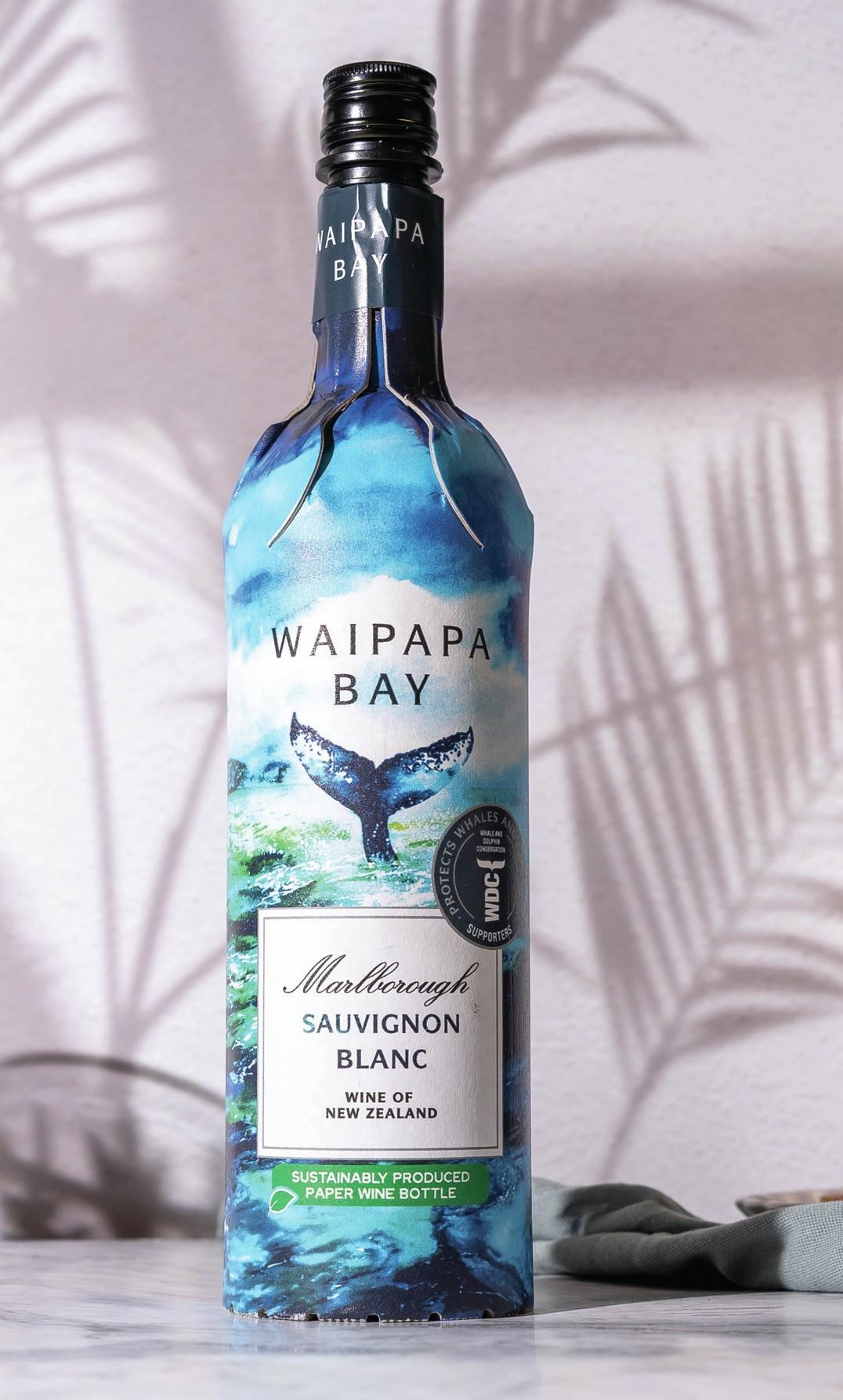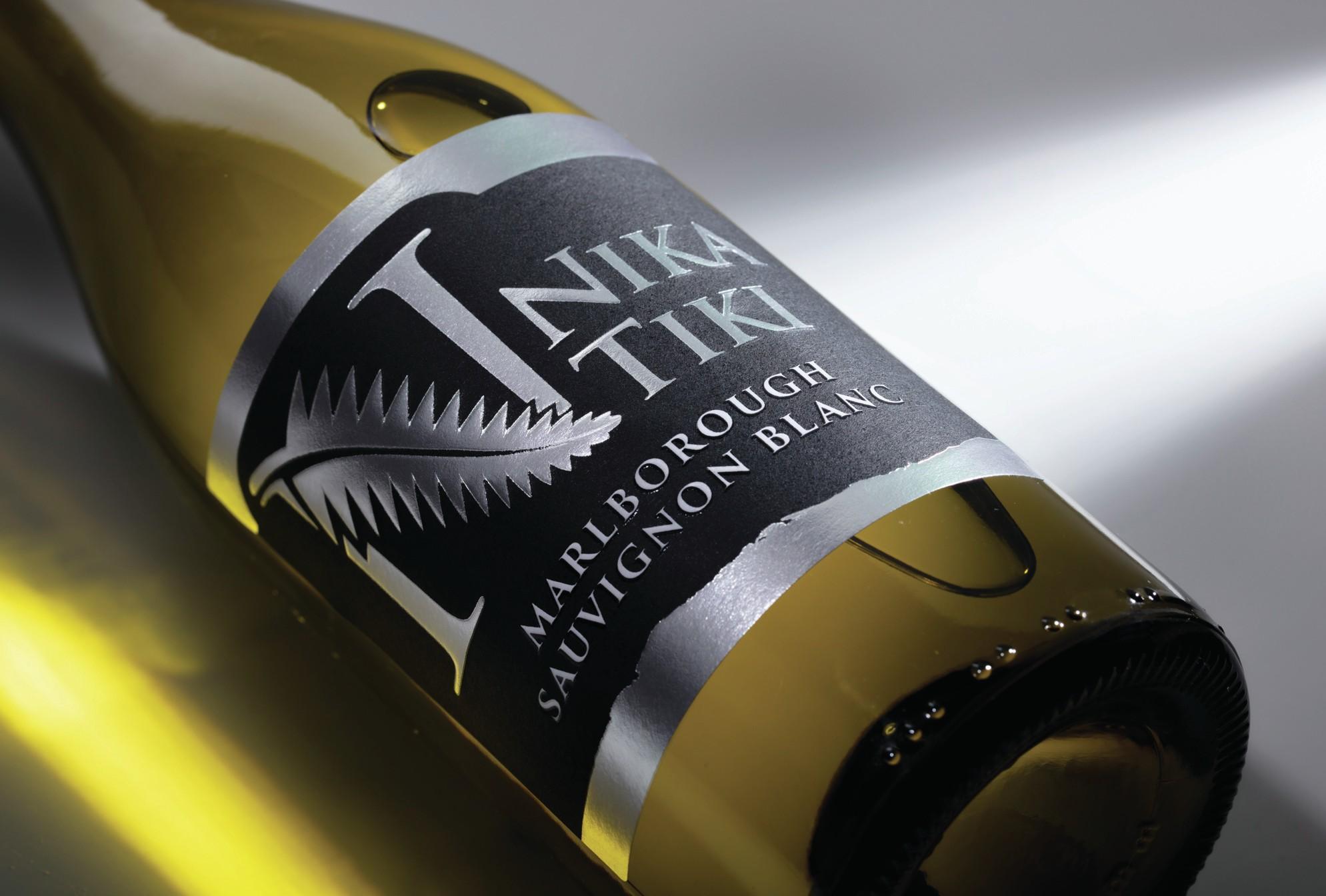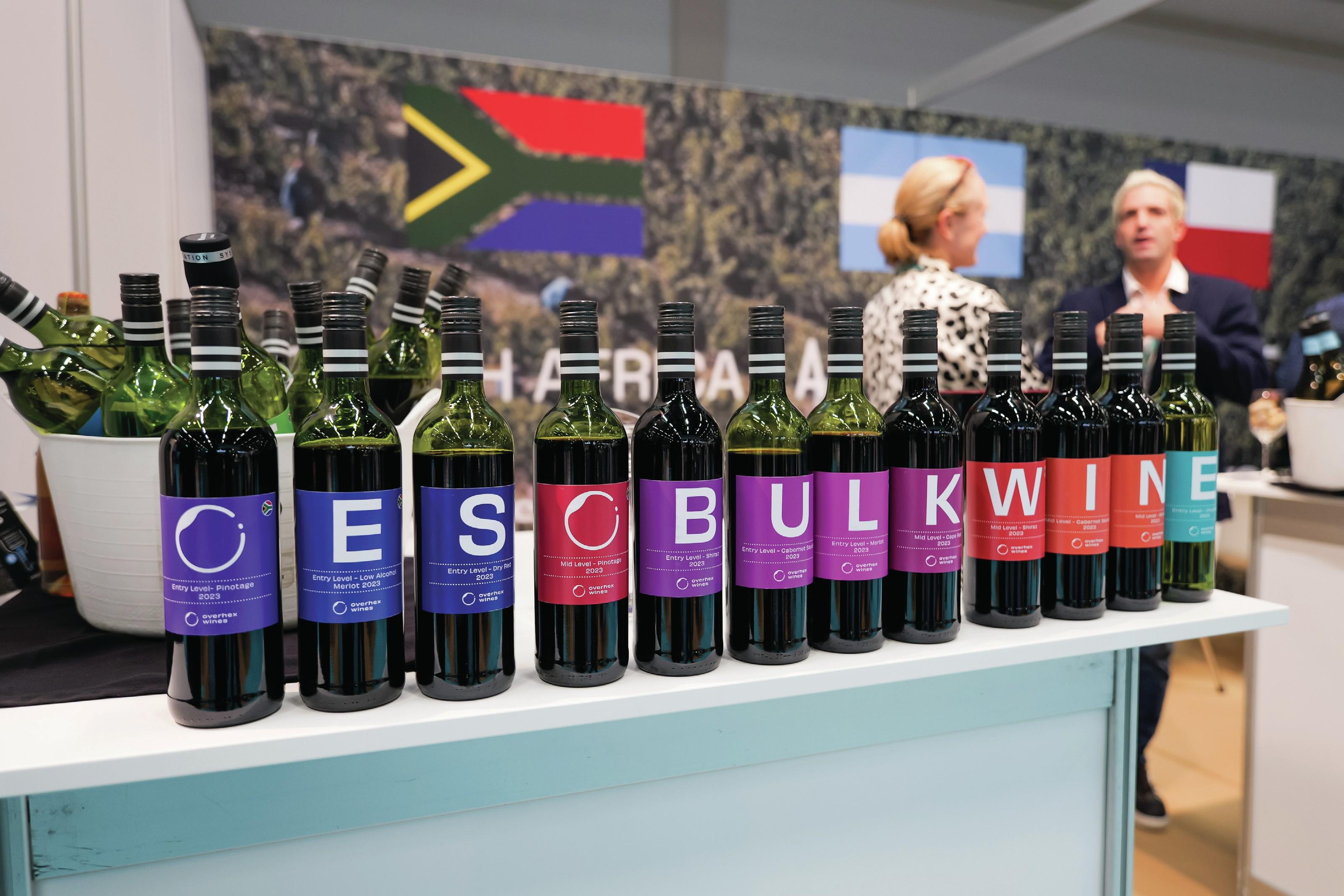How premium can bulk wine go?
By Sarah NeishYou might tend to think of bulk wine as cheap and cheerful, or perhaps own-label, but all that’s starting to change as the category moves upmarket, writes Sarah Neish.

The only constant in life is change, or so said ancient Greek philosopher Heraclitus. And this philosophical musing is certainly true for bulk wine, which has had quite the facelift in recent years.
As sustainably made and packaged wine continues to become more desirable with retailers and consumers, so too does bulk wine thanks to its impressively green credentials. And if bulk’s demand is going up, arguably so too should its value.
Put simply, says Paul Braydon, head of wine development for Kingsland Drinks, which offers contract filling for more than 40 producers around the world, bottling in-market “is highly efficient, lowers fuel use, significantly cuts carbon emissions and reduces the need to haul glass and other packaging materials around the world.”
It can also lead to a reduction in transport costs, along with improved shelf-life. “It makes commercial and environmental sense for the industry to favour wine shipped and bottled in-market, versus wine packed at source, especially for high-volume lines,” he adds.
These are just some of the reasons why more premium winemakers are switching to bulk, and why, subsequently, the entire bulk category is beginning to shift on its axis.
Rags to riches
In January this year, New Zealand’s Villa Maria began bottling in the UK to more efficiently serve this important market for its wines, while at the same time reducing the brand’s CO2 emissions. At the time of writing, Villa Maria Private Bin Sauvignon Blanc retails in the UK for around £10.75, hardly the bargain barrel offering once associated with bulk wine, when the words ‘private bin’ would have been about as likely to feature on a label as ‘barrel-fermented’ or ‘single-vineyard’.
Furthermore, trade body New Zealand Winegrowers anticipates in its new Roadmap to Net Zero report that 50% of the country’s wine will be bottled in-market by 2030 – a figure which leaps to 55% by 2040 and higher still to 60% by 2050, proving that bulk is only set to grab a more substantial slice of the pie.
We know that the trade, and to a lesser degree consumers, are beginning to appreciate that bulk often means ‘more sustainable’, so it’s surely only a matter of time before we start seeing this perceived value reflected in the price of bulk wines on shelves. Could bulk become the rags-to-riches story of the wine trade?
According to Rodolphe Lameyse, CEO of Vinexposium, the group responsible for organising the annual World Bulk Wine Exhibition (25-26 November), the key to understanding bulk wine is to view it not as a category, but as a means of shipping wine.
“Aside from bottled fermented sparkling wine, all wine is bulk before it is put into bottles,” he says. “Transporting wine in large containers over long distances makes it less prone to temperature variations than bottled wine.”
When it comes to premiumising bulk, he points out that a number of “high-end importers and retailers like The Wine Society in the UK have already incorporated bulk wine into their blueprints, because it helps them meet decarbonisation targets. Ongoing changes to legislation and the need to decarbonise the industry make this trend set to continue in the future”.
Organic expressions and offbeat varieties
Other factors are also pushing bulk more upmarket, including “the increased availability of organic expressions and offbeat varieties, which can command higher prices”, Lameyse adds.
The World Bulk Wine Exhibition is set to take place in Amsterdam, where this month more than 200 producers will exhibit their wines. Exhibitor take-up by French winemakers grew by 80% for the 2024 event compared to 2023, while the Italian presence has increased by 14%, suggesting that interest in bulk wine is growing, and not just from the traditional sources. More players are discovering that the secret to unlocking bulk’s premium potential lies in savvy marketing.

“Sustainability is embedded in every stage of the bulk wine process, which offers producers a strong narrative to support premium positioning,” says Lameyse.
More importantly, sustainability is no longer just a ‘nice to have’, but a prerequisite for many large buyers, driven not only by environmental concerns, but also by legislative pressures.
“Today, bulk wine is seen as a way to meet increasingly strict environmental standards,” says Lameyse.
Indeed, Lesley Cook, UK director of purchasing for importer and merchant Lanchester Wines, says that if producers want to achieve higher bottle prices for their bulk wines, then “every touchpoint has to shout sustainability”.
Ceiling price
Current pricing already sees much bulk wine positioned in the mid-range rather than lower price tiers, so how much room is there to climb?
According to Richard Lloyd, general manager of Encirc Beverages, which is responsible for more than half of the UK’s glass filling, “the lion’s share of the wines we pack in the UK retail for somewhere between £10 and £25, and these are wines with complexity and depth.”
Cook believes that the current ceiling price in the UK market for a bottle of bulk wine is “probably £15 if we’re talking retail – the on-trade will be around £40”.
Over at Kingsland Drinks, prices are also creeping up, with Braydon telling db that, in the past 12 months, Kingsland has “imported the most expensive wine we have ever purchased for bottling for a retailer ’s own-label wine, selling at £12.99 per bottle. This is a trend that we will continue to see, with more premium wines arriving in the coming months”.
Wiggle room
However, while there appears to be some wiggle room for increasing bottle prices, bulk will always, understandably, have its limitations. We are unlikely to ever see truly fine wines bottled in-market, partly because the rules of various designations of origin around the world forbid bottling in-market, but also due to practicalities of sale.
“It’s not really possible to transport ultra-high-value wines in bulk,” says Lanchester Wines’ Lesley Cook. “Not because of the quality, but purely due to the slower rate of sale [of high-end wines], which would impact warehousing, not to mention the high monetary value of those bottles which you might not recoup for years.”
Indeed, time spent in warehouses (and the cost shouldered of that storage) is a major factor at play.
“If you were to ship a flexitank containing a wine selling at £20 per bottle, you would have 5,280 cases of stock, which would take a long time to sell,” says Kingsland’s Braydon. “As such, your storage and warehousing costs start to outweigh the cost benefit for importing in bulk and bottling in the UK. It’s more down to rate of sale than price.”
High quality
What isn’t up for debate is the high quality of today’s bulk wines, with almost everyone across the wine trade agreeing that phenomenal improvements have been made, to the point where the quality of some bulk wines even surpasses that of imported bottled wines.
Lanchester Wines is one company that deals in both bottled and bulk. It has been shipping wine in 24,000-26,000litre tanks for decades, “and I can count on one hand the issues we’ve had”, Cook says.
“If you have the right processes in place, all should be well. Regardless of the quality, price, origin of the wine or how it’s transported, if every winemaker and shipper adheres to strict processes, wines should arrive in perfect condition.”
Depending on where wine is shipped from, the journey to the UK could take as long as nine weeks, during which time “the climatic conditions can be extreme, causing the temperature of bottled wine to vary from 7ºC (45ºF) to 32ºC (90ºF)”, explains Cook.
“However, if the wine is transported in a flexitank, the variation of the wine’s temperature is vastly reduced compared to that inside a bottle, due to the sheer volume of liquid.”
All-time high
In fact, the safety, compliance, and research and development for flexitanks “are at an all-time high”, says Mads Aaboe, global director of wine & spirits at specialist logistics firm Hillebrand Gori.
“This means that bulk wine shipments are less susceptible to thermal shocks when compared to traditional bottled products.”

Aaboe reveals that “we are witnessing higher-end wines being transported in bulk using both flexitanks and ISO tanks”.
However, he recognises that “the perception of ‘premium’ varies for each consumer, depending on their price point tolerance and how they define a premium product”.
He cautions against slapping on additional price premiums due to the current cost-of-living crisis. Any price rises “need careful consideration and consumer segment testing”, he adds.
Packaging paradox
Producers considering raising the prices of their bulk wines will need to think carefully about packaging.
“Advanced economies are moving toward net zero carbon, and under such systems, high-emission packaging like glass could end up becoming as unaffordable as diesel engines,” says Santiago Navarro, CEO of Packamama, which manufactures 100% recycled PET wine bottles for clients including Château Galoupet, Miguel Torres and The Wine Society.
“I believe in what I call ‘the Tesla approach’ to sustainable products. They need to be so appealing, cool and fun that they foster a sense of community and even a cult-like following. It’s often the emotional appeal that drives adoption.”
Last year, paper bottle pioneer Frugalpac, a firm fixture on the bulk market, won listings at premium events including the British and Singapore Grands Prix, Aintree’s Grand National and Coldplay’s Manchester gigs at the Etihad Stadium. CEO Malcom Waugh says he expects “to see a rise” in listings at high-end events in the coming 12 months. One reason for the growing popularity of Frugal Bottles is the “360-degree design canvas, allowing brands the competitive advantage of fully communicating their values,” says Waugh.
Retailers matter
Aside from eye-catching and engaging packaging, the most important factor in moving bulk up the premium scale is ultimately the retailer, with consumers willing to pay higher prices for bottles bought from trusted sources.
“In my view, most consumers are unaware that some wines are transported in bulk and bottled elsewhere,” says Navarro. “Even if they were aware, I believe it would not matter as long as they trust the retailer they are buying from. When purchasing from reputable retailers like Tesco, Aldi or The Wine Society, consumers trust the quality of the wine, regardless of where or how it was bottled.”
In summary, the quality of some bulk wine is beginning to equal, if not exceed, bottled wine. Then there’s the new legislation which means producers and retailers are being herded towards sustainable options (such as bottling in-market). Finally, a slew of funky alternative packaging designs are becoming available for bulk wine that appeal to younger, green-minded consumers, and could even help drag the sober-curious Gen Z away from their 0% beers and alcohol-free spritzes, and back to wine.

Not all, however, agree that raising bulk prices is the right way to go, despite the leaps made in quality and shelf appeal.
“Converting 99% of the market to premium is unrealistic,” says Richard Lloyd of Encirc Beverages. “What we need as an industry is to add 1% incremental gains across the chain – which will eventually allow wine producers to invest in their product.”
Question of timing
Even if raising prices in recognition of the vast improvement in bulk wine is the right thing to do, is now the best time to do it?
“Rather than charging a premium for wines bottled in-market, we should be championing the sustainability benefits and making these wines as affordable to as many consumers as possible,” argues Kingsland’s Braydon. “Consumers and the wine industry are battling inflation, some of the highest duty rates in Europe and potential increases coming again in February 2025, which the WSTA and a number of our industry colleagues are campaigning hard to avoid. Bottling in-market is the best way to make wine as affordable as possible for cash-strapped consumers.”
For a long time, ‘bulk’ was a synonym for entry-level, cost-sensitive wines, which had to land on shelves at the lowest possible price. But like it or not, we are witnessing wine bottled in-market becoming more premium with every year that passes. And its transformation shows no signs of slowing. Braydon believes there is more to come: “I predict that the sector will go through some major developments in the coming five years, with any association of bulk equalling cheap vanishing, and positive messages leading the narrative.”
Bulk wine in numbers
• Bulk shipping currently makes up about one-third of the global wine trade, although this can fluctuate based on harvest volumes.
• The UK, a major buyer of bulk, sources much of its wine from the New World, where long distances translate to cost savings – both financially and environmentally. Key suppliers to the UK include Australia, Chile, South Africa, the United States and New Zealand.
• Currently, 40% of the UK’s wine imports arrive in bulk, which jumps to 42% when including bag-in-box.
• In the first quarter of this year, UK bulk imports rose by 8.5% in volume and 16% in value.
Source: Vinexposium, organiser of The World Bulk Wine Exhibition
Related news
Bulk wine to 'benefit' from duty changes
